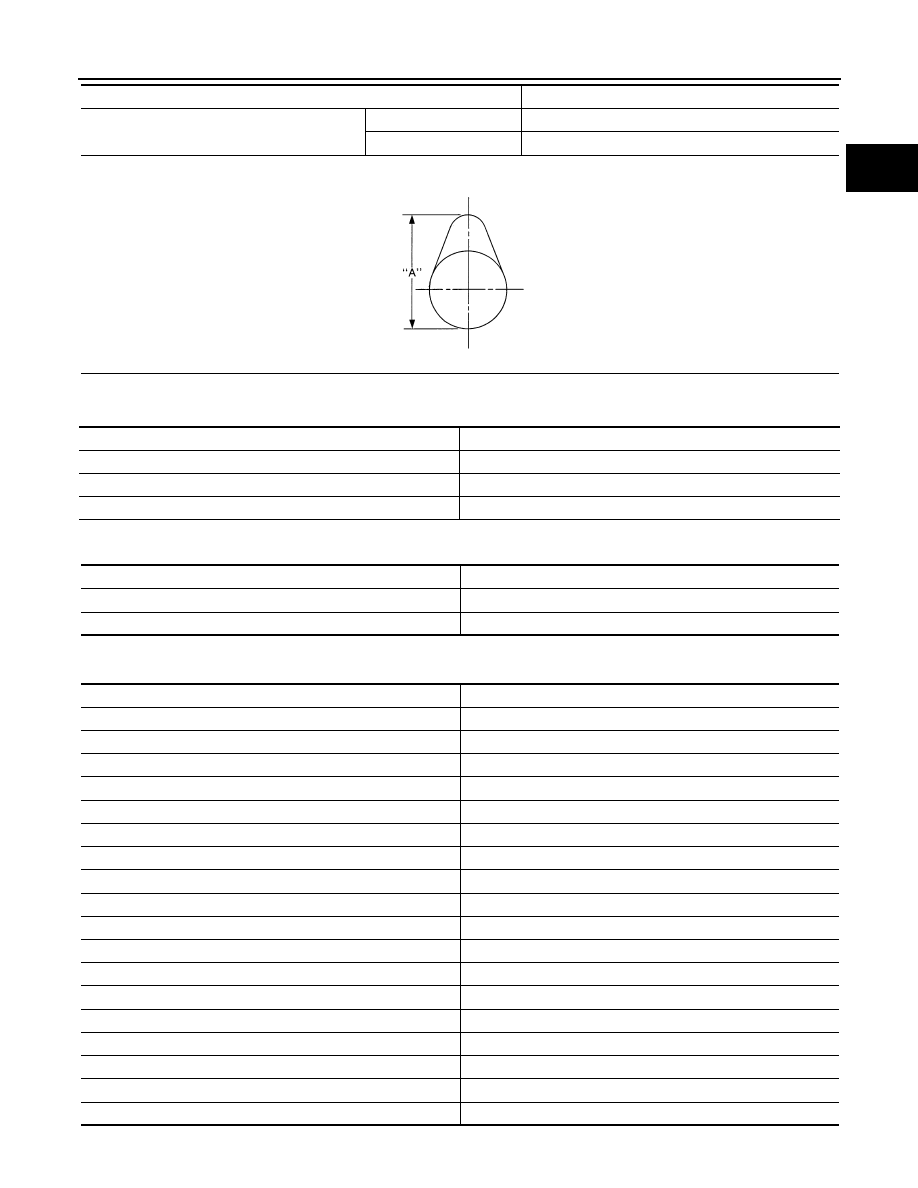Qashqai J11. Engine mechanical (HRA2DDT, K9K, MR20DD) - part 23

SERVICE DATA AND SPECIFICATIONS (SDS)
EM-353
< SERVICE DATA AND SPECIFICATIONS (SDS)
[K9K]
C
D
E
F
G
H
I
J
K
L
M
A
EM
N
P
O
VALVE LIFTER
Unit: mm (in)
VALVE CLEARANCE
Unit: mm (in)
AVAILABLE VALVE LIFTER
Unit: mm (in)
Camshaft cam height “A”
Intake
44.012 - 44.018 (1.7327 - 1.7329)
Exhaust
44.592 - 44.598 (1.7555 - 1.7557)
Items
Standard
SEM671
Items
Standard
Valve lifter outer diameter
34.965 - 34.985 (1.3767 - 1.3774)
Valve lifter hole diameter
35.000 - 35.040 (1.3780 - 1.3795)
Valve lifter clearance
0.015 - 0.075 (0.0006 - 0.0030)
Items
Cold
Intake
0.125 - 0.250 (0.0049 - 0.0098)
Exhaust
0.325 - 0.450 (0.0128 - 0.0177)
Part number
Thickness
13229BN700
7.550 (0.2972)
13229BN701
7.575 (0.2982)
13229BN702
7.600 (0.2992)
13229BN703
7.625 (0.3002)
13229BN704
7.650 (0.3012)
13229BN705
7.675 (0.3022)
13229BN706
7.700 (0.3031)
13229BN707
7.725 (0.3041)
13229BN708
7.750 (0.3051)
13229BN709
7.775 (0.3061)
13229BN710
7.800 (0.3071)
13229BN711
7.825 (0.3081)
13229BN712
7.850 (0.3091)
13229BN713
7.875 (0.3100)
13229BN714
7.900 (0.3110)
13229BN715
7.925 (0.3120)
13229BN716
7.950 (0.3130)
13229BN717
7.975 (0.3140)